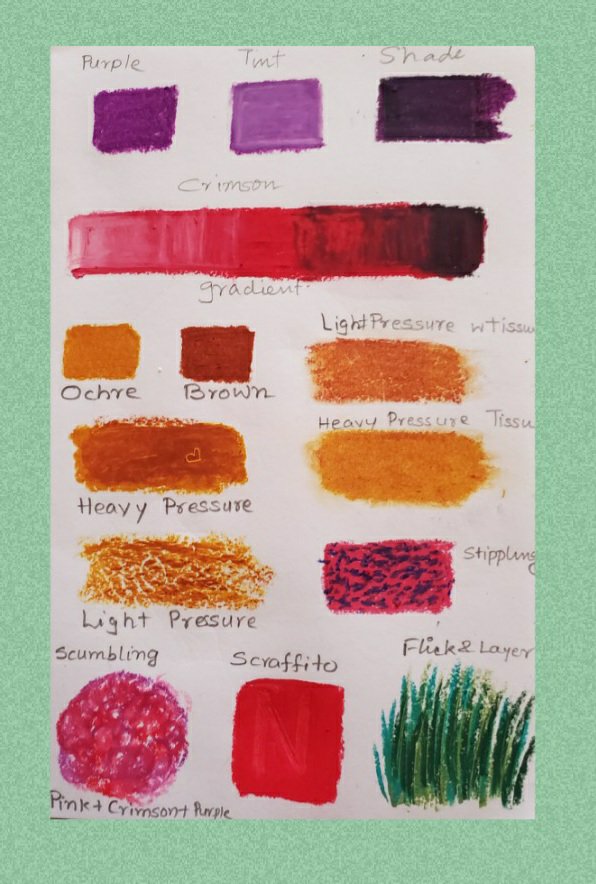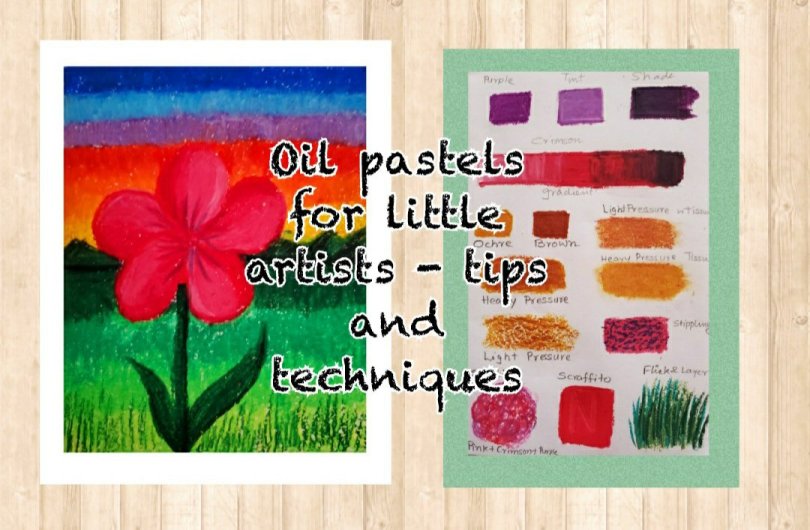Oil Pastel is an art medium that has been probably introduced to every kid in an elementary school art lesson. It is softer and better than regular crayons as they have brighter colors when applied properly and because of the wax or oil in them they spread much easily than a regular crayon where you have to press really hard to make sure that all your white spaces are colored.
But because of the oil texture, it can become messy if not handled properly. In this post I will show how to handle Oil pastels properly if you are an absolute beginner.
Some basic tips to help you get started
- Keep a paper towel or rag towel handy with you so that you can clean your hands often. You do not want the paint from your hands transferring on to your drawing paper.
- Every time you blend two or more colors on a surface, make sure that you use a paper towel to clean the oil pastel stick after use.
- You can use a blending stump or stick, a paper tissue, a Q-tip or even your clean fingers to blend and smoothen colors. ( Side Note: Professional ones do blend better and have a creamier texture than student Oil Pastels, but I would not recommend a professional quality oil pastel for beginners or kids; Student quality ones are really affordable whereas professional ones are really expensive)
- Choose your colors wisely while blending colors together, otherwise you will end up with a muddy mess. You can even try out on a scrap paper before applying it to your actual artwork.
- Always layer or blend with at least two to three colors when using oil pastels, but while choosing the colors for blending avoid colors that are on opposite side of the color wheel.
- Do not keep touching your art while you are working. You may cover up the areas that have been colored using a paper while working on the other areas. This will prevent the paint from transferring to your hands and to the other parts of your artwork and making it messy.
- Always cover your artwork with a newspaper while storing. You may also get a Fixative spray to spray on your finished artwork to prevent it from smudging.
- Oil Pastel artworks need to breathe, so do not frame them in glass frame with no room for air.
- You need to use a thick paper for applying the thick layers of oil Pastel colors. Though I usually use mixed media paper for doing my artwork, you also find Oil Pastel Paper pads that come in different shades rather than just plain white paper.
Few Beginner techniques to get you started
1.Tint. Adding White to a color to make it lighter. Start with any color and then blend it with white to make it lighter.
2. Shade. Adding Black to a color to make it darker. I usually start with black( apply the black very lightly ) and on top just apply the color of your choice and blend it together.
3. Tint +Shade. Gradation from lighter shade to the darker shade. Start with a tint and then move on to the base color and then add the shade. Lighter to darker.
4. Light Pressure blend. Blend or mix 2 or more colors with a light pressure using your fingers, paper tissue or a blending stump
5.Heavy Pressure blend. Blend or mix 2 or more colors by applying heavy pressure using fingers, tissue or blending stump
6.Stippling. Start with a lighter base and then layering it with a group of dots using a darker color
7. Scumbling. Scribbling in circular motions with multiple colors to make a texture
8. Scraffito. Starting with a color (light or dark) and then scratching it with something to make texture or design.
9.Flicking-Dark on light. Start with a lighter base and draw lines on top using 1 or more darker shades with flicking motion
10. Blending using solvent. Using a baby oil or mineral spirit to blend the colors

Keeping in mind all the above tips, try out this simple flower at Sunset using oil Pastels

